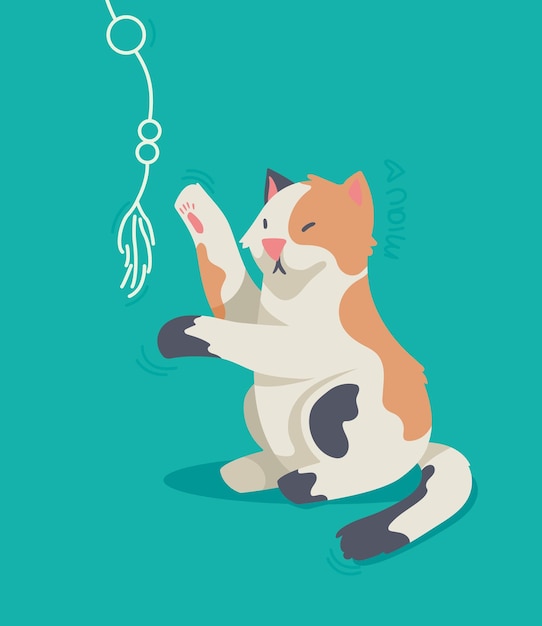Tea Leaf Cat Litter: Innovative and Sustainable
Wiki Article

Over the last few years, the trend towards eco-conscious living has encompassed every aspect of our lives, including our cherished animals. As animal owners end up being significantly familiar with the ecological effect of their furry buddies, the demand for natural cat litter has risen. But exactly what is natural cat litter, and why should animal owners consider making the switch? In this thorough guide, we'll explore the world of natural cat litter to explore its advantages, options, and everything else you require to understand.
As ecological consciousness grows among pet owners, the mission for sustainable cat litter options has actually taken spotlight. Standard clay-based litters, while popular, present ecological concerns due to their non-biodegradable nature and the environmentally extensive procedure of clay extraction. This has actually led to a surge in interest for eco-friendly alternatives that promise to be kinder to the world without compromising on efficiency. This short article looks into the world of cat litter options, highlighting their benefits, drawbacks, and what to think about when making the switch.
Clay-based feline litters, particularly those that are non-clumping, have been the go-to option for decades due to their absorbency and odor control properties. Nevertheless, their environmental footprint is worrying. The mining of salt bentonite, a key component in clumping clay litter, is disruptive to environments. Furthermore, these litters do not degrade, adding to garbage dump waste. Additionally, the dust from clay litters can be damaging to both human and feline respiratory systems, triggering animal owners to look for healthier, more sustainable alternatives.
Naturally degradable alternatives are made from a range of plant-based materials, including recycled paper, wood pellets, corn, wheat, and walnut shells. These products not only break down naturally in the environment however also typically come from eco-friendly resources, minimizing the ecological effect associated with their usage.
Recycled Paper Litter is made from post-consumer paper waste, turned into pellets or granules. It's extremely absorbent, virtually dust-free, and perfect for cats and owners with breathing sensitivities. Nevertheless, it may not control smells as effectively as other products and typically does not clump.
Wood Pellets, sourced from lumber scraps, use a natural pine scent that reduces the effects of smells without artificial scents. They're low in dust and absorb moisture well, developing into sawdust when wet. The sawdust can be sifted out, making the litter last longer, though some cats might not prefer the bigger pellet size.
Corn and Wheat Litter are known for their clumping ability, comparable to clay litters, making clean-up easy. They're naturally degradable and compostable, with natural enzymes that help control smells. However, they can be more expensive than standard litter and may Litter Boxes draw in bugs if not saved correctly.
Walnut Shell Litter makes use of the natural absorbency of crushed walnut shells, offering outstanding smell control and clumping properties. It's dust-free and environmentally friendly however can be more pricey and may not be appropriate for felines with nut allergies.
Silica gel litter, made from silica dioxide sand, oxygen, and water, is another alternative to clay. It's highly absorbent, manages smells effectively, and is low dust. While not naturally degradable, it's lighter and can last longer than clay litter, needing less regular changes. However, its greater rate point and Modern Litter Boxes the texture, which some cats may find off-putting, are factors to consider for possible users.
Cats can be particular about their litter. Gradually introduce the brand-new litter by blending it with the old, increasing the percentage of the new litter in time to enable your cat to change.
Ecological Effect: Think about the lifecycle of the litter material, from production to itter Box Liners disposal, to ensure it aligns with your environmental values.
Health and Safety: Select dust-free or low-dust alternatives to secure both your and your feline's respiratory health. Ensure the litter is totally free from chemicals or fragrances that could hurt your animal.
Expense: While some options might be more costly in advance, their durability and the quantity needed per modification can make them cost-efficient in the long run.
The Future of Cat Litter Alternatives
The pattern towards sustainable family pet care items is growing, with developments in cat litter options leading the method. Future advancements might consist of more effective eco-friendly products, enhanced odor control and clumping technologies, and even litter made from upcycled waste products. As consumer demand for eco-friendly products boosts, we can anticipate to see a more comprehensive variety of options that do not compromise on convenience or performance.
The shift towards sustainable cat litter alternatives is not simply a pattern however a reflection of a growing awareness of ecological problems among pet owners. While traditional clay litters have actually controlled the marketplace for many years, the range of biodegradable and innovative products now readily available offers promising options for those aiming to lower their eco-friendly footprint. By considering factors such as ecological effect, health and safety, and cat approval, animal owners can make informed choices that benefit both their furry buddies and the planet. As the industry progresses, the future of cat litter looks greener than ever, guaranteeing a great deal for cats, their owners, and the environment.